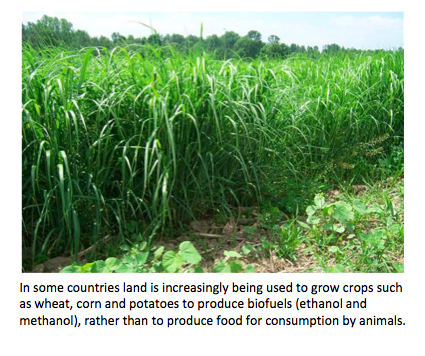C.4 Solar energy
Written specifically for students to provide help and support for the IB Diploma chemistry programme this page provides full coverage of the syllabus content of Option C - sub topic C.4. It encourages you to think critically and provides many questions with full worked answers so that you can monitor and improve your knowledge and understanding.


 Learning outcomes
Learning outcomes
After studying this topic you should be able to:
 Understand:
Understand:
- Chlorophyll and other pigments with a conjugated electronic structure can absorb light.
- Light energy is converted into chemical energy by photosynthesis:
6CO2 + 6H2O → C6H12O6 + 6O2 - Ethanol, which can be used as a biofuel, can be formed by the fermentation of glucose:
C6H12O6 → 2C2H5OH + 2CO2 - The energy content of vegetable oils is similar to that of diesel fuel but they are too viscous to be used in internal combustion engines.
- Transesterification between an ester and an alcohol with either a strong acid or base acting as a catalyst produces a different ester:
RCOOR1 + R2OH → RCOOR2 + R1OH - When triglyceride vegetable oils undergo transesterification they are converted into a mixture that mainly comprises of alkyl esters and glycerol, but also contains some fatty acids.
- Transesterification with ethanol or methanol produces oils with a lower viscosity that can be used in diesel engines.
Apply your knowledge to:
- Identify features of molecules that allow them to absorb visible light.
- Explain the reduced viscosity of esters produced with methanol and ethanol.
- Evaluate the advantages and disadvantages of the use of biofuels.
- Deduce the equations for transesterification reactions.
Relationships & vocabulary
Nature of science
Although harnessing the sun’s energy is a current area of research and challenges still remain, consumers and energy companies are being encouraged to make use of solar energy as an alternative energy source.
International-mindedness
Nothing is listed on the syllabus under this heading.Vocabulary
| photosynthesis | conjugation | biofuel | transesterification | viscosity |
Learning slides
You can use this slide gallery for learning or for reviewing concepts and information. It covers all the key points in the syllabus for this sub-topic.
Something to think about

(Image from Brightstar Eg)
This sub-topic seems to have the wrong title! If you look at the ‘Understandings’ and Applications and skills’ you will see that they all refer to energy from biomass. It is of course true that the ultimate source of biomass energy is the sun, which provides the energy for photosynthesis to occur, but ‘Solar energy’ usually describes converting the energy directly from the sun into electricity or heat. This may be through the use of photovoltaic cells or dye-sensitized solar cells (covered in the AHL sub-topic D.8) or thermal power plants, which concentrate the sun’s heat and use it to boil water to drive a steam turbine. There is also the passive use of the sun’s energy, e.g. positioning windows on the sunny side of a building and using the sunlight to heat absorbent materials on the walls and floor. This is known as space heating.
It is worth students knowing that the energy that falls from the sun onto the Earth in just one hour is enough to satisfy all the world’s energy needs for one year. However, currently solar technology converts less than 0.1% of the sun’s energy into a useable form. Plants also store less than 0.1% of this energy through photosynthesis. The more we are able to harness the energy from the sun the less reliant we will be on fossil fuels and other polluting forms of energy such as nuclear energy.
Test your understanding of this topic
(Note that your teacher may have restricted your access to some or all of these questions and worked answers if they are going to use them as a class test or set them as an assignment.)
For ten 'quiz' questions (for quick testing of knowledge and understanding with the answers explained) see MC test: Solar energy.
For short-answer questions see Solar energy questions together with the worked answers on a separate page Solar energy answers.
More resources
1. Most good videos on photosynthesis tend to focus on the biology rather than why chlorophyll absorbs visible light but for background information on the whole process this video by Paul Anderson from Bozeman Science is worth watching.
2. This video animation by the Biofuel Research Channel shows how biodiesel is actually produced commercially. It could usefully be supplemented by getting students to write the equations for the different steps as they take place.

 IB Docs (2) Team
IB Docs (2) Team 














